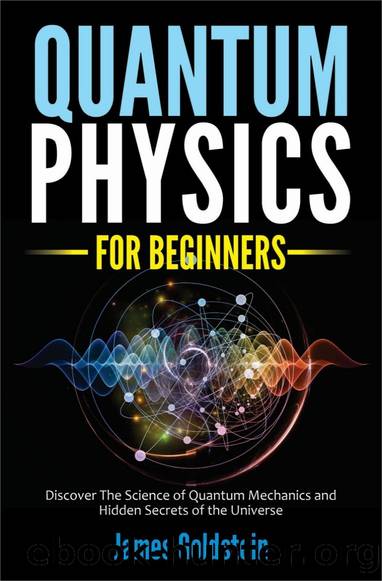Quantum Physics For Beginners: Discover The Science of Quantum Mechanics and Hidden Secrets of the Universe by James Goldstein

Author:James Goldstein [Goldstein, James]
Language: eng
Format: epub
ISBN: 9798685812124
Google: 8f3XzQEACAAJ
Amazon: B08HXBKZCS
Barnesnoble: B08HXBKZCS
Goodreads: 55319664
Published: 2020-09-12T05:00:00+00:00
First Order Theory and Second-Order Energies
The first-order theory starts with an untroubled Hamiltonian (H0), but it has no instance dependence. This order comes with visible eigenstates or levels of energy emanating from the instance-dependent Schrödinger equation such as:
= , m = 1, 2, 3, 4, 5, â¦..
Moreover, an assumption that the forces involved are discrete with the superscripts indicating the relationship of these quantities with the unperturbed system. Also, consider how the bracket notation is used in the equations.
At this stage, a perturbation could be introduced into the Hamiltonian system. Therefore, we can take V as a Hamiltonian representing a fragile substantial disturbance like potential energy generated in the external field. Then, V is originally a Hermitian operator. We can take a dimensionless factor such as ( �� ) capable of assuming values from zero, which means no disturbance to 1, signifying a full apprehension.
Then the disturbed Hamiltonian becomes
H = H0 + �� V
The eigenstates and levels of force of the troubled Hamiltonian are represented using Schrödinger equation like
(H0 + �� V) |nâ© = En |n â©
This equation is used for expressing En and |nâ© as eigenstates and energy levels of the initial Hamiltonian.
At the same time, the second-order energies follow the same method. But the estimations get difficult with the present formulation. The normalization process becomes:
2 + = 0
The normalized levels of eigenstates have the following terminologies for the energies up to the second-order, such as:
E n ( � � ) = E + � � 2 + O ( � � 3)
= | + �� ⩠+ � � 2
- � � 2 ⩠- � � 2 |n (0 ) ⩠+ O ( � � 3 )
Download
This site does not store any files on its server. We only index and link to content provided by other sites. Please contact the content providers to delete copyright contents if any and email us, we'll remove relevant links or contents immediately.
Adobe Photoshop 2024 Guide for Beginners: A Detailed Step-by-Step Manual to Mastering Professional Photo Editing and Graphic Design for Digital Photographers by Easton Denvey(40)
Analyzing and Securing Social Networks by unknow(31)
Adobe Press Fireworks CS6, Classroom in a Book (2012) by Unknown(31)
Adobe® Creative Suite® 6 Design & Web Premium Classroom in a Book®: The official training workbook from Adobe Systems by Adobe Creative Team(31)
Learning IPython for Interactive Computing and Data Visualization by Cyrille Rossant by Unknown(12)
The Final Hours of Portal 2 by Unknown(12)
OReilly Web Design in a Nutshell(2006)BBS by Unknown(11)
RPG Maker II (USA) by Jonathan Grimm(10)
